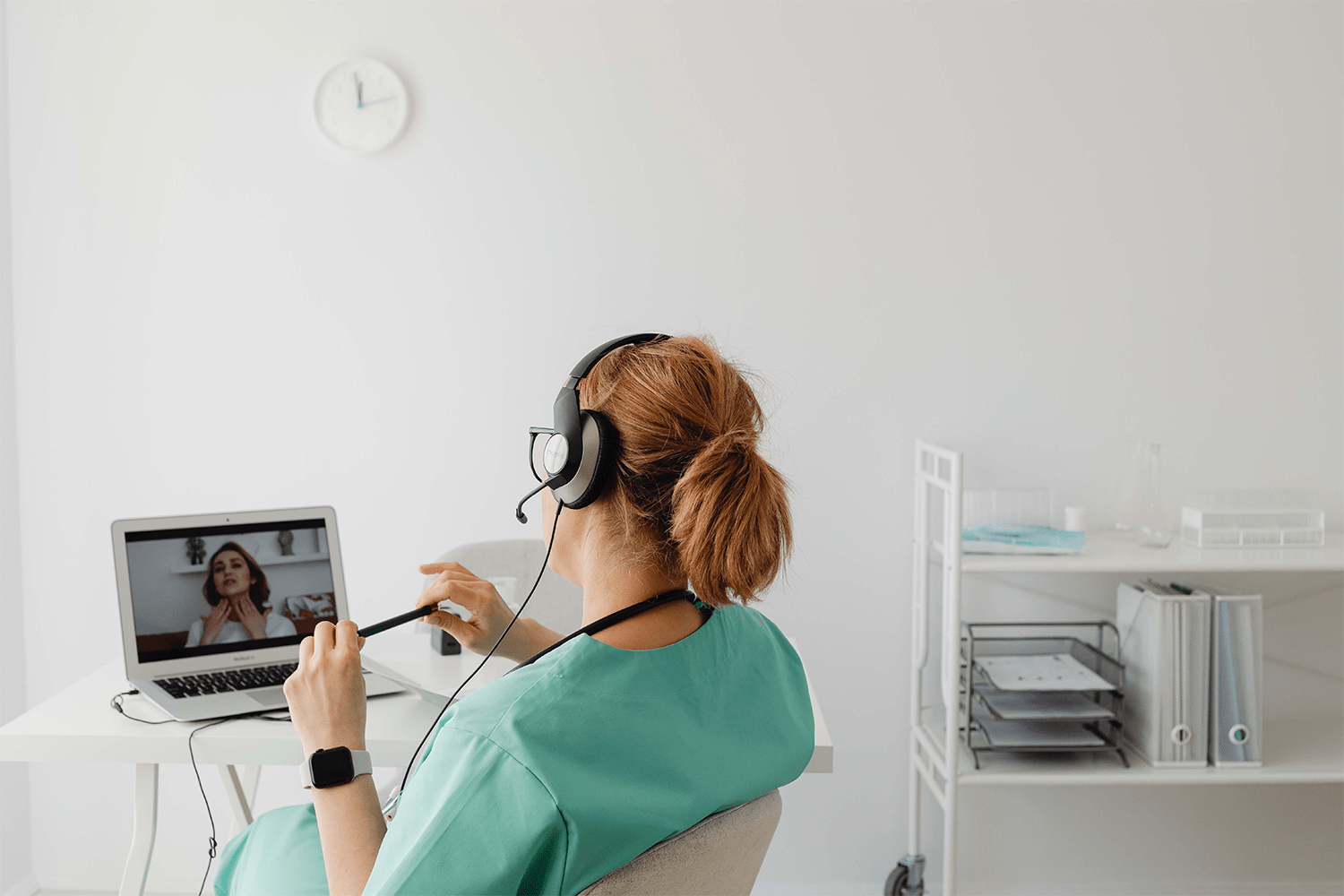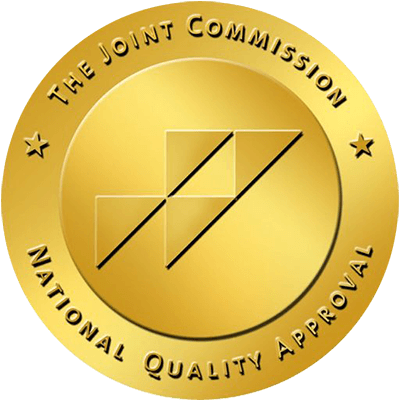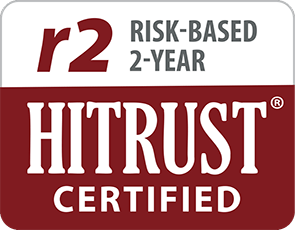Written by Ashley Kane,
Brightside Health
8 Minute Read

Medically reviewed by:
Jen Miller, PMHNP-BC
PMHNP Director
10 Minute Read

The COVID-19 pandemic has caused our lives to be flipped upside down, and it’s entirely changed the way that we do normal, daily tasks. However, not all of these changes have been such a bad thing.
Because meeting face to face isn’t always possible, using technology to remotely communicate with others has been essential. And while this has been useful for chatting with friends, attending video lectures, or going to Zoom work meetings, it has also introduced a new way of practicing medicine.
Telemedicine may be the new normal, at least for a little while. So let’s look at what it is and how it might work for you.
What is telemedicine?
Telemedicine allows healthcare professionals to evaluate, diagnose, and treat patients from a distance using technology like patient care portals, online messaging, and video calls. It’s been practiced for much longer than you may think, but it has become increasingly more important, especially in the age of the coronavirus.
Telemedicine can now be used for doctor’s visits, dental consultations, mental health services, and much more.
How does telemedicine work?
Telemedicine may look a bit different depending on the type of service you’re using. However, there are few staples that are pretty common throughout every type of telehealth session.
You will likely have an interactive video conference with a licensed professional that you can do from your phone or laptop. For therapy sessions, this may be a 30–45 minute video call about your feelings and behaviors.
After the virtual visit, you will likely receive a summary of what was discussed as well as some future guidelines. If need be, the medical professional may recommend that you come to see them for an in-person visit as a follow-up.
Some telemedicine services like Brightside also allow patients two-way communication with their provider through messaging as well. Even after your appointment, you can still reach out to your provider for full support whenever you need it.
How Brightside Health works
Medication
- Take the assessment: Answer questions about yourself to give your provider the information they need to evaluate what your needs are.
- Connect with a psychiatric provider: Get matched with an expert psychiatric provider for a comprehensive video consultation. Share how you’re feeling, then decide on the best next steps—together. These conversations normally last about 25 to 30 minutes to review your situation, discuss your care plan, and answer any questions you may have.
- Follow your care plan: If the provider thinks prescription medication could benefit you, your medication will be delivered to your door (approximately 5–7 business days after your consultation) and refills authorized by your provider will arrive monthly. Your plan includes self-care tools you can use at your own pace.
- Make progress: We’ll check in with you weekly, and your provider will monitor your progress and make any necessary changes to your care plan so you can get the best results.
Therapy
- Take the assessment: Tell us what you’re feeling and going through, and we’ll help you understand what it means.
- Connect with a therapist: Connect with an expert, licensed therapist. You’ll have access to four 30-minute video appointment included with your subscription each month (your first appointment with your therapist will be 45-minutes long), along with unlimited messaging when you need it.
- Complete sessions: Complete personalized, self-paced video lessons and practice exercises, building the evidence-based skills and habits you need to overcome your depression and anxiety.
- Make progress: Let us know what’s working well for you and where you want to go deeper, with the option to purchase additional video sessions if you choose. Your therapist will help guide you through your personalized program so you see the best results.
Is telemedicine safe?
Concerns over telemedicine are usually related to the quality of medical care and issues of privacy. Telemedicine is a safe alternative to in-person sessions, especially during the COVID-19 pandemic. It allows both the patient and provider to remain safe at a distance from a remote location through video conferencing and other telecommunications technology. Telemedicine can even be more effective as it allows for more regular communication with your provider.
As for privacy, health care providers subject to HIPAA compliance are approved to use remote communications technology in ways that are not normally acceptable under the regulations. With that said, your personal information will never be shared and most telehealth services use software with secure features to protect patient data and health records.
For your own safety, it is recommended that you take telemedicine calls in private locations away from other people, especially if you are going to be discussing your medical records and any other pertinent medical information.
Benefits of telemedicine
Even when life gets back to normal, you may choose to continue using telemedicine when applicable because of the number of benefits, including real-time assistance in managing depressive or anxious episodes.
Remote patient monitoring, condition management, and health care delivery all provide added convenience through virtual health care services.
Convenience
One of the nicest benefits of telemedicine technology is the convenience factor. You can talk to licensed providers from the comfort of your own home.
This can save you time and money, as you won’t need to get ready, travel (and pay for gas, parking, or public transportation fees), and sit in the waiting room of your doctor’s office or other healthcare facilities.
However, it can also help alleviate the anxiety and stress that you may feel before a consultation or a psychiatric evaluation, and other clinical services. For some people, the stigma of seeking professional help completely stops them from going—telemedicine can encourage more people to get help thanks to its discretion.
Not to mention, some services will even send prescription medications directly to you if your provider recommends them. For example, Brightside’s team of licensed psychiatric providers can prescribe you medications to be sent straight to your front door if needed. This can save you an unnecessary trip to the pharmacy.
And finally, since some providers are able to practice from their own homes as well, you might find that they have more availability in their schedule than they may in a traditional office setting, offering the same amount of patient care.
Safety
Telemedicine during a pandemic is highly useful, as it allows the patient and the provider to remain at a safe distance. But even if you have something as simple as a question about a missed dose of medicine, using remote services can get you instant answers to urgent questions.
Accessibility
One of the greatest advancements that telemedicine allows is that it expands the number of individuals who can have access to healthcare. For people with physical disabilities or even if their anxiety prevents them from being able to travel to an office by themselves, telemedicine now gives them the ability to have comprehensive care right from their home.
And, as mentioned above, it makes mental health services more accessible to more people thanks to its discrete nature.
Is telemedicine right for you?
If you’re experiencing symptoms and think that virtual care will be adequate, then using telemedicine is a smart way to go. Telehealth has a unique application in the mental health sphere, as mental disorders such as anxiety and depression do not require blood work or physical examination to diagnose. Because of this, you don’t necessarily need to be in person with a provider to effectively assess and treat them.
With that said, telemedicine is not recommended if you are experiencing intense, severe, or life-threatening symptoms. You should still go to an in-person emergency room or doctor’s office for these situations.
Furthermore, telemedicine may come down to personal preference. If you don’t think that using remote services will be right for you, then you should follow the path of in-person treatment.
In Summary
Telemedicine is a form of healthcare that has been around for quite some time. However, new advancements in video calling and mobile technology have made it much more comprehensive and safe than it has ever been creating a greater demand for this service throughout the healthcare industry.
Most telehealth appointments take place over a video call with a provider. Some even give you the option of messaging with a provider even when you’re not in a virtual session.
Telemedicine is beneficial because it’s convenient, safe for both the doctor and patient, and it also makes healthcare more accessible for people who may have difficulty going in person.
If you’re ready to start your virtual mental health journey, Brightside has the providers to guide you along the way. Click here for more FAQs, medical education, and health information, as well as to start your free assessment and see how telehealth can be of benefit to you.













